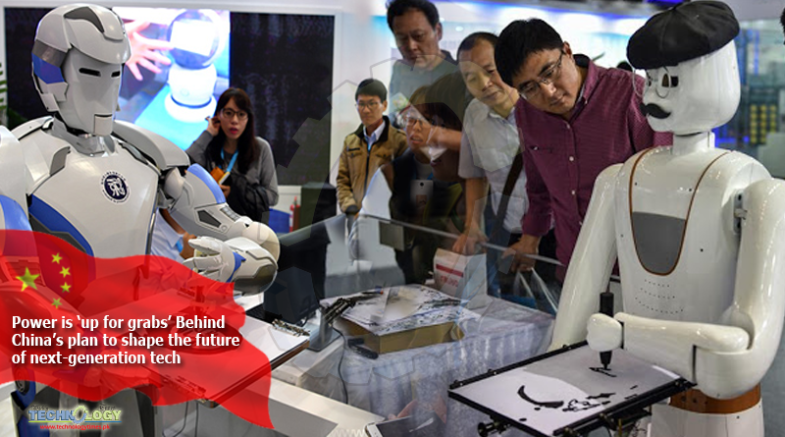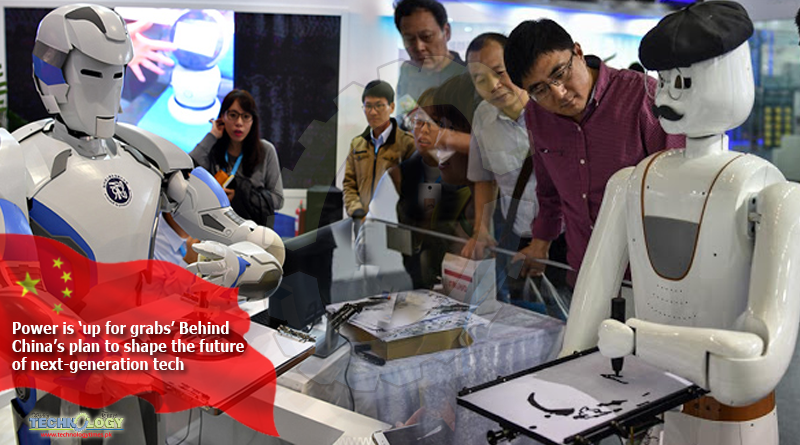China is set to release a new plan this year called “China Standards 2035” with the aim of influencing how the next-generation of technologies, from telecommunications to artificial intelligence, will work.

is set to release an ambitious 15-year blueprint that will lay out its plans to set the global standards for the next-generation of technologies.
The move could have wide-ranging implications for the power Beijing wields on the global stage in areas from artificial intelligence, to telecommunications networks and the flow of data, experts told CNBC.
“China Standards 2035” is set to be released this year after two years of planning. Experts said it is widely seen as the next step, following the “Made In China 2025″ global manufacturing plan — but this time, with a much larger focus on technologies that are seen as defining the next decade.
“The diagnosis is, we are entering an era that will be defined by new technological systems and networks and technologies and the leaders in those are yet to be determined and this gives China the opportunity to determine that,” Emily de La Bruyere, co-founder of consultancy Horizon Advisory, told CNBC in an interview.
“That means power in the world is up for grabs.”
What are standards?
Technologies and industries around the world have standards that define how they work and their interoperability around the world. Interoperability refers to the ability for two or more systems to work together.
The telecommunications industry is a good example. New networks such as 5G aren’t just turned on. They take years of planning and development. Technical standards are created through collaboration between industry bodies, experts and companies.
Those technical specifications are adopted and integrated into what becomes known as standards. That ensures that standards are as uniform as possible, which can improve the efficiency of network rollouts and ensure they work no matter where you are in the world.Technical standards is not a topic that is simply abstruse but a concrete way to shape the playing field and landscape for the future of these technologies.Elsa KaniaCENTER FOR A NEW AMERICAN SECURITY (CNAS)
Standards are behind many of the technologies we use every day, such as our smartphones.
Major American and European technology companies, such as Qualcomm and Ericsson, have been part of standards setting across various industries. But China has played an increasingly active role in the past few years.
What do we know about the plan?
In March, Beijing released a document which translates as “The Main Points of National Standardization Work in 2020.”
Bruyere and Horizon Advisory co-founder Nathan Picarsic said this gives us an insight into what might be found in the final blueprint for China Standards 2035, particularly when looking at Beijing’s plans internationally.
Some of the points in the plan from March include a push to improve standards domestically across various industries, from agriculture to manufacturing. But one section of the document highlights the need to establish a “new generation of information technology and biotechnology standard system.”
Within that section, there is a focus on developing standards for the so-called Internet of Things, cloud computing, big data, 5G and artificial intelligence (AI). These are all seen a crucial future technologies that could underpin critical infrastructure in the world.
The document also outlines the need to “participate in the formulation of international standards” and that China should put forward more proposals for international standards.
One expert said the move is a dual play — to strengthen standards domestically and boost the economy, and to have influence globally.
“China domestically is trying to up its standards game. One of the big weaknesses in the economy is the fact that nothing happens in a standard normalized way across time, distance and space. You have different requirements in this city, different requirements from day to day from month to month,” Andrew Polk, partner at Beijing-based research and consultancy firm Trivium China, told CNBC.
″(China Standards 2035) is a combination of domestic exigencies and the need to improve their own economic performance and efficiency and their desire to set the standards, literally and figuratively, abroad.”
As Beijing began researching for China Standards 2035, an official reportedly said it was the country’s opportunity to “surpass” the rest of the world. Dai Hong, director of the second department of industrial standards of China’s National Standardization Management Committee, was quoted by state-backed publication Xinhua as saying at that time that many of the patents and technical standards for next-generation technologies had not yet been formed.
China’s standards push
China Standards 2035 gives the country a new impetus but over the past few years, the influence of the world’s second-largest economy was already growing.
“5G is a prominent example in so far as, 5G is the case we have seen the most aggressive companies not just to set standards at home but to actively shape global standards setting,” Elsa Kania, adjunct senior fellow with the technology and national security program at the Center for a New American Security (CNAS), told CNBC.
5G refers to next-generation mobile networks that are seen as critical in supporting future infrastructure.
Chinese firm Huawei, one of the leading players in 5G networking equipment, has also been a key player in standards setting. It has the highest number of patents related to 5G, and is ahead of its closest European rivals Nokia and Ericsson, according to intellectual property analysis firm IPlytics.
Originally Publish at: https://www.cnbc.com/
